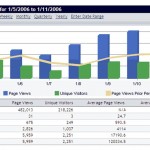 Serious about winning the attention of a good art gallery or dealer? If so, you need to understand the core common elements that successful art gallery directors and art sales people look for when they visit and review your artist website.
Serious about winning the attention of a good art gallery or dealer? If so, you need to understand the core common elements that successful art gallery directors and art sales people look for when they visit and review your artist website.
In our experience Galleries, Art Dealers, and Art Buyers have as many views of how work should be showcased online as there are stars in the sky. The wonderful thing is that these skills and preferences have been developed through the process of actually buying and selling art. Don’t ever under-estimate the experience and skill required to do this consistently – at Art Marketing Secrets we take our hats off to good art salespeople – and you can learn a lot from them.
In the last five years we’ve talked to a lot of galleries and dealers and we’ve found there are common elements which most agree on regarding what they like to see when they visit artist websites. Here is a snapshot for you to focus on:
- You might only have a few seconds to make an impression! Art dealers are business people who need to sell to survive and prosper. While they may love art, their primary focus is the business of art. If the first impression from your website doesn’t get their attention you’ve lost them.
- A simple, minimalist, and elegant style. Not busy!
- Complete focus on the art itself with neutral complimentary website background colors.
- Beautifully lit and photographed images. This is probably the single most important visual factor in an artist website. Where possible we recommend using a professional photographer experienced in shooting fine art.
- Don’t overpower the look of the art with a site that looks too busy
- No “Designer-ish” effects like flash movies. In the time it takes to play your exotic flash-based entry page, the gallery will have already moved on to look at the next artist website.
- Clear Navigation – Don’t let visitors get lost in your website because when they get lost they will LEAVE! Clear, consistent navigation on every page is vital.
- Include everything you would have in a hard-copy portfolio – bios, artist statements, resumes, etc.
- Consistency in style and quality is extremely important to art business people. There are two ways you can help this: (i) Only put your very best work on the artist website – you have to be 125% proud of it. (ii) Structure the gallery sections of your artist website into separate sub-gallery sections each of which should show consistency in style and theme. Think of how commercial galleries and museums use separate spaces to focus attention and realize that is what they want to see in your website.
- The about the artist section needs to be designed to engage and interest – too often it’s thrown in as an afterthought. This is very important because buyers and galleries are interested in (1) your art and (2) You the artist and (3) You the business person. Your “about” section is a subtle sales pitch so do it well and if you don’t like to write consider hiring a professional.
- It should be very easy to contact you. A very clearly-labeled contact page should include an email address or contact form AND a phone number. I am amazed at how many artist websites I visit that don’t list a phone number on the contact page. Big Mistake! In my experience, the most serious business people often prefer to call you – so don’t make it difficult for them. A studio address or PO box is also good to include because it gives a sense of physical reality to your business. As a side note, its best to avoid using your home phone as your business phone. It can be off-putting to a buyer to see your stunning work beautifully showcased on your website gallery only to call you and hear a voicemail message like: “Hello. This is the Adams family. Please leave a message for Amy, Jeff, and Twinky after the tone!” Get a second line and put a professional message on the voicemail. Keep your image and your message coherent.
- Be aware of the potential positive or negative reaction you might experience from selling reproductions of your work online if your target sales channel strategy is galleries. Some galleries will be impressed that you are obviously business-savvy enough to be able to sell your work in this way. Others might consider it a threat to any potential sales relationship they might have with you. Just be aware of who you are dealing with and how they might see this.
Follow these steps and your website will be on its way to impressing galleries, art dealers, and collectors.
Speaking of impressing art buyers – we are just a few days away from the launch of our new artist showcase websites at Espresso Artist Websites To Go! If you’re serious about online art sales success please visit, sign up for our free report, and learn about our 21st Century Art Marketing machines.


I am just in the process of setting up my online portfolio and this article is just what I needed to read to cut through the confusion of what I should include. I'm quite pleased to say I can already tick a good number of these tips!
You see so many artists websites that are difficult to navigate, too wordy, too fussy and over designed. A visitor has come to see your pictures and any distractions are just off-putting.
Rightly or wrongly I choose to spread myself over Twitter, FB and DeviantArt aswell as my portfolio, I consider these other places are where I can show my sketches, unfinished works and what inspires me.
I want to be noticed by galleries… Now how do I get the right people to see me and see my portfolio lol!?
Thanks EJP
Thanks for commenting Edward. Glad that you have so many ticks! Your strategy of spreading yourself is wise – we recommend taking advantage of as many online and offline resources as possible to get attention. Ideally the goal should be to bring much of that traffic back to your core artist website where you have carefully crafted your presentation and story.
Daniel.